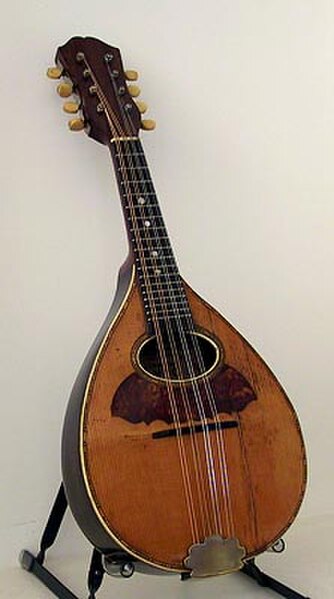A resonator mandolin or "resophonic mandolin" is a mandolin whose sound is produced by one or more metal cones (resonators) instead of the customary wooden soundboard. These instruments are sometimes referred to as "Dobro mandolins," after pioneering instruments designed and produced by the Dopyera Brothers, which evolved into a brand name. The trademark "Dobro" is currently the property of the Gibson Guitar Corporation. When Gibson acquired the trademark in 1993, they announced that they would defend their right to its exclusive use.
1930 National Triolian resonator mandolin from Lowell Levinger's collection
Blue Comet mandolin. This one was manufactured by the Regal Musical Instrument Company.
A mandolin is a stringed musical instrument in the lute family and is generally plucked with a pick. It most commonly has four courses of doubled strings tuned in unison, thus giving a total of eight strings. A variety of string types are used, with steel strings being the most common and usually the least expensive. The courses are typically tuned in an interval of perfect fifths, with the same tuning as a violin. Also, like the violin, it is the soprano member of a family that includes the mandola, octave mandolin, mandocello and mandobass.
Archtop mandolin
In 1787, Luigi Bassi played the role of Don Giovanni in Mozart's opera, serenading a woman with a mandolin. This used to be the common picture of the mandolin, an obscure instrument of romance in the hands of a Spanish nobleman.
Clockwise from top left: 1920 Gibson F-4 mandolin; 1917 Gibson H-2 mandola; 1929 Gibson mando-bass; and 1924 Gibson K-4 mandocello from Gregg Miner's collection.
Piccolo mandolin






